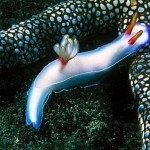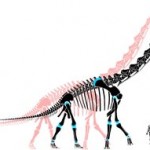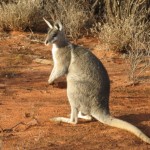Archive for the ‘Wildlife A-Z’
-
Zoo History – Ancient Egyptians And Their Zoos
Posted in Wildlife A-Z | December 1, 2010 Ever wondered about the concept of zoo history? Where do you think was the first ever zoo of the world? Who ran it? What animals found shelter there? Zoo History And Egypt: There are reports and studies conducted that suggest that a lot of the wealthy Egyptians used to like to have a garden or a fishpond where they’d house giraffes, waterfowls, elephants and even bears. Sometimes, these wild animals were also tamed and kept as pets. This is said to be true of the case of the lion that belonged to Ramses II. It was said to go into battle with him. The Egyptians also had a penchant for collecting exotic animals, chickens, rhinos, ostriches, etc. Some of these animals had been indigenous to the country at an earlier date, but weren’t found [...]
Ever wondered about the concept of zoo history? Where do you think was the first ever zoo of the world? Who ran it? What animals found shelter there? Zoo History And Egypt: There are reports and studies conducted that suggest that a lot of the wealthy Egyptians used to like to have a garden or a fishpond where they’d house giraffes, waterfowls, elephants and even bears. Sometimes, these wild animals were also tamed and kept as pets. This is said to be true of the case of the lion that belonged to Ramses II. It was said to go into battle with him. The Egyptians also had a penchant for collecting exotic animals, chickens, rhinos, ostriches, etc. Some of these animals had been indigenous to the country at an earlier date, but weren’t found [...] -
Ruby Throated Hummingbird – The North American Favorite
Posted in Wildlife A-Z | November 25, 2010 The ruby throated hummingbird is a bird I came across while checking for profiles on birds the other day. This is a lovely little bird which is said to be the most commonly recognized among the hummingbirds of North America. It is the only hummingbird which is known to regularly breed in the United States of America. The red and green plumage of this little bird is well known and easily recognizable among bird watchers. The scientific name of the ruby throated hummingbird is archilocus colubris. Appearance: Size: It is around 3 to 3.75 inches in length and has a wing span of about 4.5 inches, with wings that are narrow and tapered. Bill: Black and long, with a downward curve. Colors: The colors found would include black, red, white, gray, [...]
The ruby throated hummingbird is a bird I came across while checking for profiles on birds the other day. This is a lovely little bird which is said to be the most commonly recognized among the hummingbirds of North America. It is the only hummingbird which is known to regularly breed in the United States of America. The red and green plumage of this little bird is well known and easily recognizable among bird watchers. The scientific name of the ruby throated hummingbird is archilocus colubris. Appearance: Size: It is around 3 to 3.75 inches in length and has a wing span of about 4.5 inches, with wings that are narrow and tapered. Bill: Black and long, with a downward curve. Colors: The colors found would include black, red, white, gray, [...] -
Manta Rays Magic
Posted in Wildlife A-Z | November 2, 2010 Wild manta rays can never be accustomed to surface swimming that is slow, especially if it is for a fixed period of time. They do not usually swim at the surface post meals or after being handled by humans. Therefore, how can you train a giant manta that is in captive? How do you get a manta to feed from a ladle and then swim into a stretcher for veterinary purposes? Ladle Training Getting a giant manta ray into an aquarium is a huge responsibility. The staff at the aquarium must ensure that the animal gets all the nutrition and nourishment that it needs. The Georgia Aquarium located in Atlanta, Georgia is a unique one, in that they teach their mantas to feed from a ladle that is color coded. Giant manta rays traditionally consume plankton. [...]
Wild manta rays can never be accustomed to surface swimming that is slow, especially if it is for a fixed period of time. They do not usually swim at the surface post meals or after being handled by humans. Therefore, how can you train a giant manta that is in captive? How do you get a manta to feed from a ladle and then swim into a stretcher for veterinary purposes? Ladle Training Getting a giant manta ray into an aquarium is a huge responsibility. The staff at the aquarium must ensure that the animal gets all the nutrition and nourishment that it needs. The Georgia Aquarium located in Atlanta, Georgia is a unique one, in that they teach their mantas to feed from a ladle that is color coded. Giant manta rays traditionally consume plankton. [...] -
The Rare Breed Of Hybrid Florida Panthers
Posted in Wildlife A-Z | October 26, 2010 The rare Florida panthers soon seemed to go extinct. In a last minute effort Texas cougars were allowed to breed with the Florida Panthers; and the result is a hybrid and stronger breed of the panthers, that according to one scientist, should be dubbed as the Arnold Schwarzeneggers of cougars. The Florida panthers are a subspecies of the cougar, or the big cats that are found in the region that lie across America. These cats are called pumas or even mountain lions, based on the region that they’re found in. In the early 1900s, the people ended up hunting the Florida panther out of their natural habitat in the U.S. range. The animals fled to the rugged swamps of South Florida. The inbreeding amongst the few that were left ended up leading to [...]
The rare Florida panthers soon seemed to go extinct. In a last minute effort Texas cougars were allowed to breed with the Florida Panthers; and the result is a hybrid and stronger breed of the panthers, that according to one scientist, should be dubbed as the Arnold Schwarzeneggers of cougars. The Florida panthers are a subspecies of the cougar, or the big cats that are found in the region that lie across America. These cats are called pumas or even mountain lions, based on the region that they’re found in. In the early 1900s, the people ended up hunting the Florida panther out of their natural habitat in the U.S. range. The animals fled to the rugged swamps of South Florida. The inbreeding amongst the few that were left ended up leading to [...] -
Cerbalus aravensis – New Spider Species Discovered In Israel
Posted in Wildlife A-Z | October 21, 2010 Earlier this year, there was a discovery of a new species of spider which have been discovered in the Sands of Samar, which is part of the southern region (Arava) in Israel. The pictures that have been released by the University of Haifa-Oranim are enough to send shivers down the spine of someone who suffers from arachnophobia. The spider in question has a leg span of about 5.5 inches; this new spider is rumored to be the biggest or the largest of its types in the whole of the Middle East. The habitat of this spider is endangered. It is said that there could be other species that could be seen in that area; and the scientists are hoping that they can come across the various species of the region before they become extinct. There is that fear [...]
Earlier this year, there was a discovery of a new species of spider which have been discovered in the Sands of Samar, which is part of the southern region (Arava) in Israel. The pictures that have been released by the University of Haifa-Oranim are enough to send shivers down the spine of someone who suffers from arachnophobia. The spider in question has a leg span of about 5.5 inches; this new spider is rumored to be the biggest or the largest of its types in the whole of the Middle East. The habitat of this spider is endangered. It is said that there could be other species that could be seen in that area; and the scientists are hoping that they can come across the various species of the region before they become extinct. There is that fear [...] -
Aquatic Predator – The Killer Orca
Posted in Wildlife A-Z | October 19, 2010 Go to a beach, you wish to watch the dolphins jump and play and swing around in the shallowness of the waters they belong to. You find them cute and mischievous, don’t you? Most of us have a presumption in mind that dolphins do behave friendly and harmless. Think again. Are you talking about all dolphins? Better don’t; you may be proved wrong by Orcas. The Orcas are the world’s largest dolphins, also called the killer whales. They are the most powerful as predators of the ocean that devour the larger marine creatures and mammals like the other whales, seals, sea lions, etc. They take hold of the seals right off the ice and skid them to end up into their wide orals. Fish, seabirds and squids also serve as diet for the Orcas. The places [...]
Go to a beach, you wish to watch the dolphins jump and play and swing around in the shallowness of the waters they belong to. You find them cute and mischievous, don’t you? Most of us have a presumption in mind that dolphins do behave friendly and harmless. Think again. Are you talking about all dolphins? Better don’t; you may be proved wrong by Orcas. The Orcas are the world’s largest dolphins, also called the killer whales. They are the most powerful as predators of the ocean that devour the larger marine creatures and mammals like the other whales, seals, sea lions, etc. They take hold of the seals right off the ice and skid them to end up into their wide orals. Fish, seabirds and squids also serve as diet for the Orcas. The places [...] -
Smaller Dinosaurs Existed
Posted in Wildlife A-Z | October 14, 2010 When we think of dinosaurs, the first pictures to enter our mind would be that of gigantic beasts that either ate leaves off really tall trees or the carnivores that ate smaller animals. It is almost improbable for us to imagine smaller dinosaurs; especially dinosaurs the size of a chicken. Sounds bizarre, doesn’t it? But it is true. Meet Albertonykus borealis: This is said to be a chicken sized dinosaur who seemed to have a profound taste for termites; and must have been like the ‘anteater’ of the era it lived in. It would have been the smallest of dinosaurs that have ever been discovered in the whole of North America. This new species has been given the name Albertonykus borealis and is said to be a member of the group of dinosaurs called [...]
When we think of dinosaurs, the first pictures to enter our mind would be that of gigantic beasts that either ate leaves off really tall trees or the carnivores that ate smaller animals. It is almost improbable for us to imagine smaller dinosaurs; especially dinosaurs the size of a chicken. Sounds bizarre, doesn’t it? But it is true. Meet Albertonykus borealis: This is said to be a chicken sized dinosaur who seemed to have a profound taste for termites; and must have been like the ‘anteater’ of the era it lived in. It would have been the smallest of dinosaurs that have ever been discovered in the whole of North America. This new species has been given the name Albertonykus borealis and is said to be a member of the group of dinosaurs called [...] -
The Census of Marine Life Throws Up Surprises
Posted in Wildlife A-Z | October 7, 2010 The Census of Marine Life which took about ten years to complete is said to have thrown up some interesting surprises that has taken scientists, researchers and marine life enthusiasts by surprise. National Geographic News spoke about the closing of the Census on Monday, 4th of October, 2010. Here’s a look at some of some of the discoveries made by the decade long inventory. Tube Worms That Are About 600 Years Old: These worms, called Escarpia Laminata, were discovered by the Census of Marine Life and further research showed that some of these could live for up to 600 years. This would easily make them some of the oldest known animals to inhabit Earth. The Giant Oyster: There was another remarkable discovery made. A new species of the [...]
The Census of Marine Life which took about ten years to complete is said to have thrown up some interesting surprises that has taken scientists, researchers and marine life enthusiasts by surprise. National Geographic News spoke about the closing of the Census on Monday, 4th of October, 2010. Here’s a look at some of some of the discoveries made by the decade long inventory. Tube Worms That Are About 600 Years Old: These worms, called Escarpia Laminata, were discovered by the Census of Marine Life and further research showed that some of these could live for up to 600 years. This would easily make them some of the oldest known animals to inhabit Earth. The Giant Oyster: There was another remarkable discovery made. A new species of the [...] -
Dinosaurs May Have Been Taller
Posted in Wildlife A-Z | October 5, 2010 Gist of the Matter: It may have seemed obvious that the leg bone of the dinosaur was connected to the hip bone; but what was it that came in between these bones wasn’t such an obvious point. As per research conducted by the University of Ohio and the University of Missouri, the dinosaurs may have had thick layers of cartilage that played the role of the ‘joining component’ in the joints. This would mean that these dinosaurs may have been significantly taller than we’ve estimated them to be all these years. This study will soon be published in the journal called PLoS ONE (Public Library of Science). The Study Says: According to the study conducted on the limbs of the modern-day relatives of the dinosaur family, the dinosaurs may have [...]
Gist of the Matter: It may have seemed obvious that the leg bone of the dinosaur was connected to the hip bone; but what was it that came in between these bones wasn’t such an obvious point. As per research conducted by the University of Ohio and the University of Missouri, the dinosaurs may have had thick layers of cartilage that played the role of the ‘joining component’ in the joints. This would mean that these dinosaurs may have been significantly taller than we’ve estimated them to be all these years. This study will soon be published in the journal called PLoS ONE (Public Library of Science). The Study Says: According to the study conducted on the limbs of the modern-day relatives of the dinosaur family, the dinosaurs may have [...] -
Extinct Species Get Rediscovered
Posted in Wildlife A-Z | October 1, 2010 The two centuries that have gone by are said to have witnessed accelerated rates of extinction of certain animal species. There has been endangerment that has taken place alongside the industrial progress and there has been rapid growth of the human population. Naturally speaking, the concept of ‘background extinction’ has been in play for a very long time now. However, it is estimated that the extinction rates in current times are said to be about 1000 times the background extinction rates that were known earlier. Most of this animal extinction can be relegated to two causes – human demand for animal resources; or human demand for natural resources which may contain the habitat of certain animals. The Latest Buzz: Australian biologists [...]
The two centuries that have gone by are said to have witnessed accelerated rates of extinction of certain animal species. There has been endangerment that has taken place alongside the industrial progress and there has been rapid growth of the human population. Naturally speaking, the concept of ‘background extinction’ has been in play for a very long time now. However, it is estimated that the extinction rates in current times are said to be about 1000 times the background extinction rates that were known earlier. Most of this animal extinction can be relegated to two causes – human demand for animal resources; or human demand for natural resources which may contain the habitat of certain animals. The Latest Buzz: Australian biologists [...]


